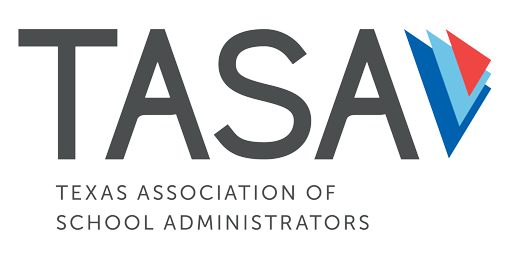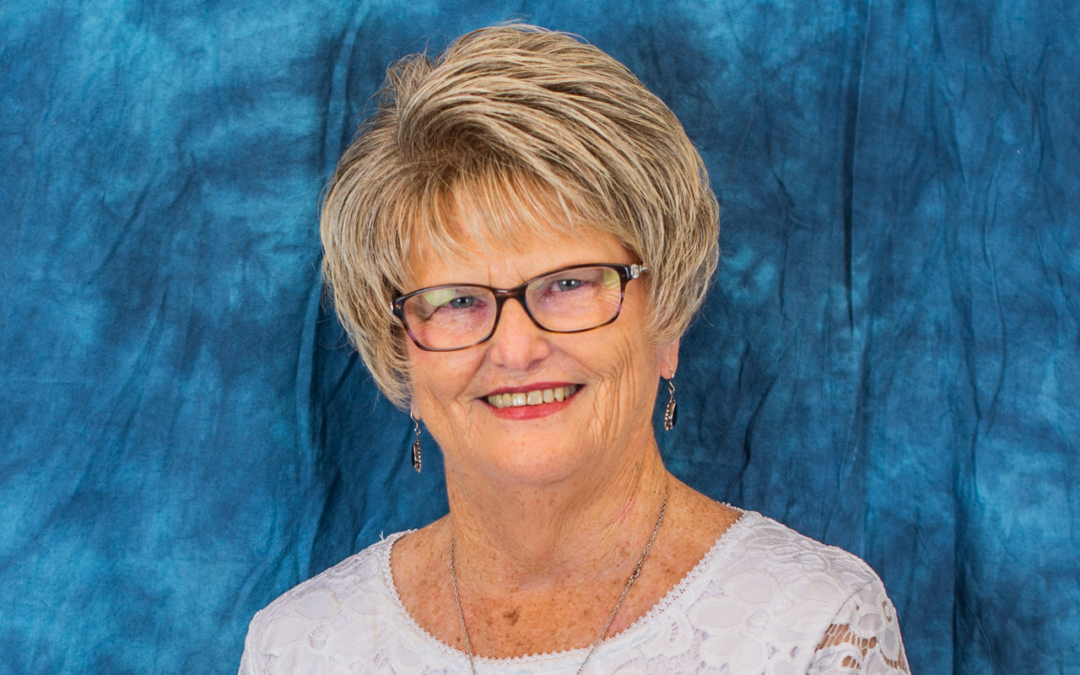In July 2021, TASA launched the Executive Superintendent program, which was designed to provide TASA members with access to an extensive and diverse cadre of experienced former superintendents — TASA Executive Superintendents — with an array of combined expertise. The program combines the previous superintendent-in-residence and member services representative programs. Through the program, TASA members have access to 10 executive superintendents, each dedicated to serving administrators in two ESC regions. These executive superintendents serve as an extension of TASA staff and are on hand to support TASA members in a variety of ways, with an emphasis on helping new superintendents navigate the role. As seasoned administrators, these superintendents are able to listen and provide support based on their own experiences. Below we introduce you to the TASA Executive Superintendent for ESC Regions 13 and 14, Stephanie Cravens Arterbury.
The path to the superintendency is pretty much the same for most folks. It starts with a calling, then an undergraduate degree and time spent in the classroom before moving into administration and heading back to school for advanced degrees. For Stephanie Cravens Arterbury, the path to the top kicked off in a different way.
Arterbury came from what she calls a “very dysfunctional family.” She bounced around between homes as a child, moving back and forth between family members and friends. As a result, she never got to stay in one school system for long. Arterbury attended seven different elementary schools in three different states. She didn’t begin and end a school year in the same school until she was in ninth grade.
With this kind of upheaval in her formative years, it might not be a big surprise that Arterbury married at just 16 years old, dropping out of traditional high school to attend night school, where she earned her diploma.
Years later, after her own children were in elementary school, Arterbury returned to pursuing her own education, attending college during the day when she had a few spare hours. Wanting to volunteer at her kids’ school, she joined the parent/teacher association, eventually becoming the group’s president. It was there that Arterbury found her calling.
“It connected me to the power of what an educational system can be, the power of what schools can be, and the impact they can have on lives,” Arterbury says of her time on the PTA. From there, Arterbury got the itch to start working as a substitute teacher. She earned her associate degree so she could start working, filling in for teachers in her children’s district. The work left her wanting more.
“Subbing just increased my thirst to become a teacher, and I wanted my own classroom,” Arterbury says. She worked as a substitute two or three days a week to pay for her college tuition, spending the other days working toward her bachelor’s degree and teaching certification. Once she reached that goal, she moved her family to Sheldon ISD, outside of Houston, to work as an elementary school teacher.
After nine years in the classroom, Arterbury’s administrators encouraged her to help lead the school where she taught. She loved teaching and didn’t want to leave her classroom, but as the district grew, Sheldon ISD needed someone to serve as an assistant principal for one year. Thinking it was just a one-year commitment, Arterbury took the job, expecting to return to the classroom afterward.
She wound up taking to the position like a duck to water. “That year generated a desire in me to be in administration, because I saw that I could impact even more than just one classroom,” she says.
Arterbury returned to college to get her master’s degree so that she could make the move to administration a permanent one. At the time, she was not only making big strides in her own career, but initiating a sea of change in Sheldon and beyond.
When a principal position opened in the district, Arterbury took it, becoming Sheldon’s first female principal. She held the position for five years and loved every minute of it. Sheldon ISD had a high percentage of low-income and minority enrollment, and with her own unstable youth, Arterbury felt a kinship with the students. She not only understood where they were coming from, but she served as an inspiration to them — living proof that no matter where they came from, through education they could be anything that they wanted to be.
While serving on a TEA monitoring team, Arterbury learned she was being transferred and would now be serving as the district’s director of elementary education. After that, she became deputy superintendent in Sheldon, serving for two and one-half years before the board asked her to take the superintendent’s seat.
At first, Arterbury declined the offer, but the board knew they had a standout on their hands, and they finally convinced her to take the job. After going back to school for more post-graduate work, she again broke barriers, becoming the first female superintendent of Sheldon ISD, a position she held for a decade.
“In all of Region 4 at that time, there were 54 school districts, and at my first superintendent meeting, I was the only woman in the room,” Arterbury says. “I tell people I think they thought I was there to serve the coffee. But I wasn’t.”
When Dr. Shirley Neely, who later served as Texas commissioner of education, became superintendent in Galena Park ISD, she and Arterbury became fast friends. The only two women superintendents in Region 4, the pair worked to support female administrators and encourage more women to become leaders in the field.
“The purpose was to encourage one another, to be there for one another and to try to help each other be successful as our numbers grew,” Arterbury says. “It’s not about men versus women, because we need both types of leaders. Men bring their experience to the role, but women have an experience base we can bring, too.”
Years later, this is still an area about which Arterbury feels passionate.
And in her role as an executive superintendent for TASA, she is able to mentor and support up-and-coming superintendents.
Arterbury joined TASA when she became an administrator and quickly took advantage of available mentoring and learning opportunities, including the yearly Midwinter Conference. As an administrator, she brought all of her staff to the conference, encouraging them to attend different workshops and sessions during the day so they could reconvene in the evenings and share what they’d learned, making the most of the offerings.
When Arterbury retired from Sheldon ISD, then-TASA Executive Director Johnny L. Veselka reached out to her, asking if she’d like to serve as a member service representative for the association. She jumped at the chance, eager to bring her passion for TASA and public education into her post-retirement life and allowing her to continue working for Texas’ schoolchildren. (The member service representative program became the executive superintendent program in July 2021.)
“Stephanie has always been considered an expert in her field,” says Region 5 ESC Executive Director Dr. Danny Lovett, who has known Arterbury for 20 years. “A lot of people have knowledge and experience, but what makes her special is her personality and the relationships she builds.”
Sheldon ISD honored Arterbury in no small way when she retired after 30 years in the district. The school board named the Stephanie Cravens Early Childhood Academy after her, ensuring that her legacy will be remembered in the district for generations to come. Nearby San Jacinto Community College also paid tribute by naming the campus’ main street Cravens Drive.
From her extraordinary climb to the top, Arterbury knows firsthand that the superintendent’s office can be a lonely place. It can be wearing to serve as a district’s constant cheerleader, and being in the top position can make it difficult to bounce new ideas or tricky questions off your colleagues without raising alarm or creating upheaval.
In her role with TASA, Arterbury strives to be a sounding board and a confidant for the administrators she serves. If a superintendent is considering adopting a new program, Arterbury is on hand to discuss the possibilities and help research what that change might mean for the district, before the administration might be ready to go public with the idea.
“Stephanie’s advice is always very well thought out,” says Lovett. “There are a lot of people out there who tell you how they would do something, but Stephanie’s very adept in helping you come up with how you want to do something.”
With an emphasis on communication, Artberbury takes her job supporting administrators seriously, encouraging them to call her day or night when they need to talk things out. “When you’re stressed, let me talk you down,” she says. “You can call me and vent, and nobody will ever know you did that.”
“Stephanie is totally selfless,” Lovett says. “The first thing she always says is, ‘How can I help you?’ She is a wonderful role model, and I try to emulate her.”
Through her tireless work with TASA, Arterbury’s core goal is to help at-risk young Texans. For her it’s personal, and she serves as a living example of the potential the education system has to help all of its students succeed.
“Knowing where I came from, it doesn’t seem possible that I can be where I am today, and I owe that to Texas public education,” she says. “That’s why it’s my duty to give back to others, and I’m hoping in some way I’m helping other superintendents see that and believe that.”
Find contact information for all 10 TASA Executive Superintendents.






